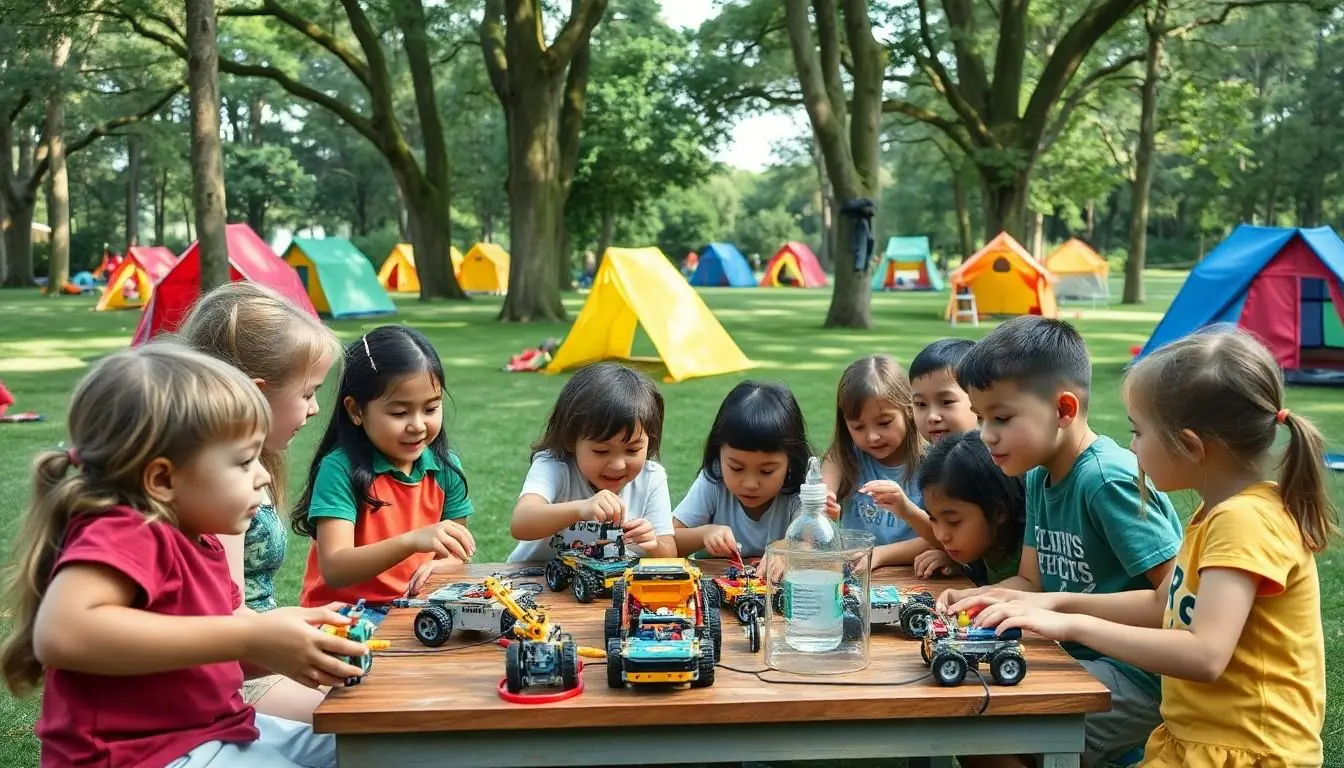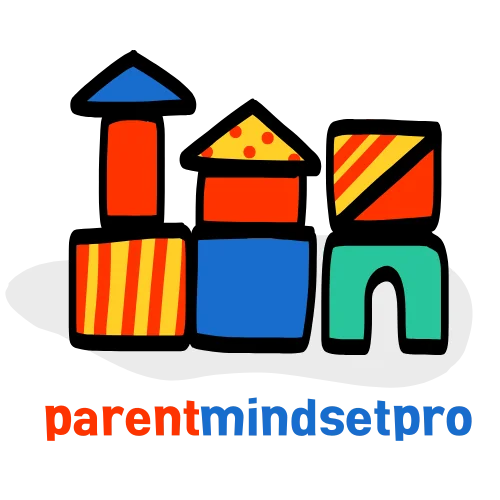Imagine a world where kids transform into mini Einsteins, equipped with lab coats and goggles, ready to conquer the mysteries of science and technology. STEM camps for kids are the ultimate playground for young minds, blending fun and learning in a way that makes even the most reluctant learner excited to dive into experiments. These camps spark curiosity and creativity, turning everyday kids into future innovators.
Table of Contents
ToggleOverview of STEM Camps for Kids
STEM camps offer immersive experiences, nurturing children’s interests in science, technology, engineering, and mathematics. These engaging programs inspire creativity and encourage exploration.
Definition of STEM Camps
STEM camps are educational programs designed for children, focusing on hands-on activities that integrate various aspects of STEM fields. Such camps often provide opportunities for kids to engage in experiments, coding projects, and engineering challenges. Camps may vary in duration, ranging from a week to multiple weeks, allowing flexibility in participation. Programs target multiple age groups, ensuring appropriate learning experiences for diverse developmental stages.
Importance of STEM Education
STEM education plays a crucial role in preparing kids for future careers. It promotes critical thinking, problem-solving, and collaboration skills essential for success in a rapidly changing world. Engagement in STEM activities boosts students’ understanding of real-world applications, enhancing their ability to innovate. Research indicates that early exposure to STEM concepts increases interest in science and technology careers, leading to a more skilled workforce. Today’s children benefit from foundational knowledge that empowers their growth and future opportunities.
Types of STEM Camps

STEM camps provide various learning experiences designed to cater to children’s interests and needs. Different types of camps offer unique activities and structures, allowing kids to dive deep into science, technology, engineering, and mathematics.
Day Camps
Day camps run during weekdays, offering flexibility for working parents. These camps usually last from a few hours to a full day, with structured schedules that include a mix of activities. Kids engage in hands-on projects like robotics, biology experiments, and coding workshops. Many day camps also incorporate outdoor activities, allowing students to explore nature and its connection to science. Local community centers and schools often host these camps, making them accessible for many families.
Overnight Camps
Overnight camps provide extended STEM experiences, focusing on immersive learning over several days. Participants typically stay in cabins or dorms, fostering teamwork and collaboration among peers. Staff members guide children through various projects such as engineering challenges and physics experiments. Despite the overnight component, these camps also prioritize safety with trained personnel on-site. Kids return home with new skills and lasting friendships, enhancing their passion for STEM subjects.
Specialty Camps
Specialty camps focus on specific areas within STEM, offering tailored programs that dive deeper into particular topics. These camps might explore areas like environmental science, computer programming, or forensic science. Participants benefit from expert instruction, often collaborating with professionals in their fields. Specialized workshops and unique challenges present opportunities for hands-on learning and innovation. Kids unlock their potential by engaging with exciting, focused content that inspires future study and career paths.
Benefits of STEM Camps
STEM camps offer numerous advantages that positively impact children’s development. These programs enhance critical thinking skills and encourage teamwork and collaboration.
Enhancing Critical Thinking Skills
STEM camps focus on developing analytical abilities. Participants engage in hands-on experiments that require observation and hypothesis testing. Through problem-solving activities, children learn to evaluate data and draw conclusions. Campers tackle real-world challenges, which promotes reasoned decision-making. Their experiences foster creativity, allowing them to approach problems from diverse angles. Weekend workshops may introduce coding challenges that strengthen logic skills. Overall, STEM camps create environments where critical thinking flourishes.
Encouraging Teamwork and Collaboration
Teamwork is a foundational element of STEM camps. Campers work together in small groups, fostering communication and cooperation. Collaborative projects enable children to share ideas and divide tasks, refining their interpersonal skills. Participants often engage in competitions or group challenges that promote mutual support and shared victories. By collaborating on engineering designs, they learn the value of diverse perspectives. The sense of community within camps enhances camaraderie, leading to lasting friendships. Together, these experiences instill essential collaboration skills useful in academic and professional settings.
Popular STEM Camp Activities
STEM camps offer a variety of engaging activities that foster learning and creativity. Children’s enthusiasm grows through hands-on learning experiences across various fields.
Robotics Workshops
Robotics workshops challenge kids to build and program robots. Each session typically includes assembling components using kits and programming devices to complete specific tasks. Problem-solving skills develop as children tackle robotic challenges and collaborate in small teams. Understanding basic engineering and coding principles becomes easier through these interactive sessions. Campers often compete in friendly robot competitions, adding excitement and encouraging innovation. Exposure to robotics enhances critical thinking while introducing students to future technological careers.
Coding Sessions
Coding sessions introduce campers to the fundamentals of programming languages. With guidance from experienced instructors, participants learn to create simple applications and games. Each child receives personalized attention, ensuring they grasp concepts like algorithms and debugging. Projects vary in complexity, gradually increasing as campers’ skills improve. Collaboration occurs as kids brainstorm ideas and share coding techniques. Exposure to coding equips children with essential skills for a future where technology dominates.
Science Experiments
Science experiments provide hands-on opportunities for inquiry-based learning. Campers conduct experiments that illustrate key scientific principles, such as chemical reactions and physics laws. Each activity encourages observation and critical analysis, fostering a deeper understanding of scientific concepts. Kids often work in small groups, sharing findings and collaborating on project documentation. Enthusiasm for science grows as they see real-world applications of classroom knowledge. Access to diverse experiments sparks curiosity and passion for further exploration in STEM fields.
How to Choose the Right STEM Camp
Choosing the right STEM camp requires careful consideration of several key factors. Evaluating the camp curriculum helps ensure the program matches a child’s interests and learning objectives.
Evaluating Camp Curriculum
Assessing the camp curriculum allows parents to identify its focus areas and teaching methods. Programs should emphasize hands-on activities that promote engagement and discovery. Look for camps that feature a mix of subjects within STEM, such as robotics, coding, and environmental science. Reviewing sample projects or activities gives insight into the camp’s offerings. Programs that encourage collaboration and teamwork are beneficial, as these skills are essential in STEM fields. Additionally, many camps provide a chance for campers to create personal projects, fostering creativity and innovation.
Considering Location and Cost
Location plays a crucial role in selecting a STEM camp. Camps located nearby reduce travel time and accommodate busy schedules. Parents should also factor in the cost of each program, as prices can vary significantly. Some camps charge fees based on duration or specialized programs offered. Look for financial assistance options or scholarships that make camps accessible to a wider range of families. Evaluating the cost-to-benefit ratio helps parents determine if a camp provides valuable experiences aligned with their child’s interests. Prioritizing these aspects ensures both convenience and affordability in the decision-making process.
STEM camps for kids offer invaluable experiences that ignite curiosity and foster essential skills. By engaging in hands-on activities children not only learn but also develop a passion for science and technology. These camps create an environment where teamwork and collaboration thrive, helping kids build lasting friendships while enhancing their problem-solving abilities.
Choosing the right STEM camp can significantly impact a child’s future interests and career paths. With various options available parents can find programs that align with their child’s unique interests. Investing in a STEM camp experience is a step toward empowering the next generation of innovators and thinkers, ensuring they’re well-equipped for the challenges of tomorrow.
